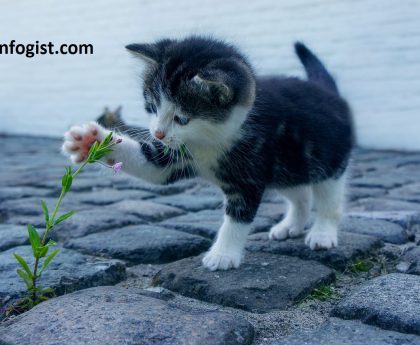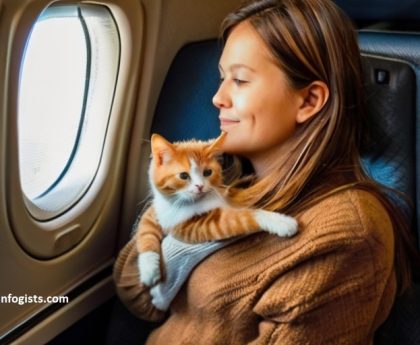Understanding Cat Body Language: Interpreting Tail, Ear, and Vocal Signals
Introduction:
Table of Contents
ToggleCats are fascinating creatures with their own unique way of communicating. Even though they can’t talk like humans, they express themselves through body language. By paying attention to their tails, ears, and the sounds they make, we can understand what they’re feeling and respond appropriately.
Interpreting Cat Body Language:
- Tail Signals:
- Tail held high: When a cat holds its tail upright, it usually means it’s feeling happy and confident. It might come up to you for some attention or start playing.
- Puffed-up tail: If a cat’s tail looks puffy, it’s a sign of fear or agitation. They might feel threatened and ready to defend themselves.
- Tail twitching: Cats often twitch their tails rapidly when they’re excited or focused on something. It’s like they’re getting ready to pounce on a toy or chase after something.
- Tail tucked between legs: If a cat tucks its tail between its legs, it’s a sign of fear or discomfort. They might be feeling scared or anxious about something.
- Ear Positions:
- Forward-facing ears: Cats with their ears pointing forward are usually curious and interested in what’s going on around them. They’re paying close attention to their surroundings.
- Flattened ears: When a cat’s ears are pressed flat against its head, it means they’re feeling upset or scared. They might be feeling threatened and want to protect themselves.
- Rotating ears: Cats move their ears around to catch different sounds. If they’re moving their ears a lot, it means they’re really focused or excited about something.
- Vocalizations:
- Meowing: Cats meow for lots of reasons, like saying hello, asking for food or attention, or letting you know they’re not feeling well. The sound and length of the meow can tell you what they need.
- Purring: We often think cats purr when they’re happy, but they might also purr when they’re in pain or feeling scared. It’s important to look at their other behavior to understand why they’re purring.
- Hissing or growling: If a cat hisses or growls, it means they’re feeling threatened or angry. It’s best to give them some space until they calm down.
Conclusion:
Understanding your cat’s body language can help you build a stronger bond with them and make sure they’re happy and comfortable. By paying attention to their tail, ears, and the sounds they make, you can better understand what they’re trying to tell you.
FAQ:
Q: Why does my cat sometimes purr when it’s not happy? A: Cats might purr for different reasons, not just when they’re happy. They might purr when they’re feeling scared, in pain, or just want some comfort. Pay attention to their other behavior to figure out why they’re purring.
Q: How can I help my cat feel more comfortable when its ears are flattened? A: If your cat’s ears are flattened, it means they’re feeling scared or upset. Give them some space and try to remove anything that might be stressing them out. Wait until they start to relax before trying to interact with them again.
Q: Is it normal for my cat’s tail to twitch? A: Yes, it’s normal for cats’ tails to twitch, especially when they’re excited or focused on something. They might be getting ready to play or chase after something.





